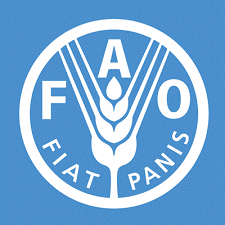The benchmark for world food commodity prices declined moderately in October, down by 0.5 percent from September with the index for dairy products the only one to rise, the Food and Agriculture Organization of the United Nations (FAO) reported Friday.
The FAO Food Price Index, which tracks monthly changes in the international prices of a set of globally-traded food commodities, averaged 120.6 points in October, down 10.9 percent from its corresponding value a year earlier.
The FAO Cereal Price Index declined by 1.0 percent from the previous month. International rice prices dropped by 2.0 percent amid generally passive global import demand, while those of wheat dropped by 1.9 percent, weighed on by strong supplies from the United States of America and strong competition among exporters. By contrast, quotations for coarse grains rose slightly, led by maize due to thinning supplies in Argentina.
The FAO Vegetable Oil Price Index decreased by 0.7 percent from September, as lower world palm oil prices, due to seasonally higher outputs and subdued global import demand, more than offset higher prices for soy, sunflower and rapeseed oils. Soy oil prices rose owing to a robust demand from the biodiesel sector.
The FAO Sugar Price Index declined by 2.2 percent but remained 46.6 percent above its year-earlier level. The October decline was mainly driven by a strong pace of production in Brazil, although concerns over a tighter global supply outlook in the year ahead capped the drop.
The FAO Meat Price Index declined by 0.6 percent, as sluggish import demand especially from East Asia led to a fall in the international prices of pig meat, more than offsetting marginal increases in the prices of poultry, bovine and ovine meats.
In a contrasting trend, the FAO Dairy Price Index rose by 2.2 percent in October, ending a nine-month decline. World milk powder prices rose the most on the back of surging import demand for both near and longer-term supplies as well as some uncertainty over the impact of the El Niño weather conditions on the upcoming milk production in Oceania.
Comfortable world cereal stocks
In a new Cereal Supply and Demand Brief, also released Friday, FAO maintained its forecast for world cereal production in 2023 at 2 819 million tonnes, a record high.
Some adjustments were made to country-level figures, notably higher coarse grain production in China and most of West Africa and lower forecasts for the United States of America and the European Union. Wheat output forecasts were raised for Iraq and the United States of America and revised downward for the European Union and Kazakhstan. World rice production in 2023/24 is forecast to increase marginally year on year. The new revisions include an upgrade to India’s production, more than offsetting various other revisions, particularly a further downgrade of Indonesian production prospects.
World cereal utilization in 2023/24 is forecast to reach 2 810 million tonnes, with the total utilization of both wheat and coarse grains set to surpass the 2022/23 levels while that of rice expected to stagnate at the previous season’s level.
The world cereals stocks-to-use ratio for 2023/24 is forecast to stand at 30.7 percent, “a comfortable supply situation from a historical perspective” and marginally above the previous year’s level of 30.5 percent, according to FAO.
Global trade in cereals in 2023/24 is forecast at 469 million tonnes, a 1.6 percent contraction from the preceding year.
Conflicts and weak currencies aggravate hunger in vulnerable countries
Persisting and intensifying conflicts are aggravating food insecurity, and moderating international food commodity prices are being countered by weak currencies in many low-income countries. A total of 46 countries around the world, including 33 in Africa, are assessed to need external assistance for food, according to the latest Crop Prospects and Food Situation report, a triannual publication by FAO’s Global Information and Early Warning System (GIEWS), also published today.
More than half the residents of the Gaza Strip were estimated to be in acute food insecurity already in 2022, and escalation of the conflict there will increase humanitarian and emergency assistance needs even as access to the affected areas remains an alarming concern, FAO said, adding that spillover effects from the conflict could worsen food insecurity in Lebanon.
While world cereal production is forecast to expand by 0.9 percent in 2023 from the year before, the pace of growth will be half of that rate for the group of 44 Low Income Food Deficit Countries (LIFDCs), the report notes.
The report offers detailed information about food insecurity and price trends that people face on the ground in the affected countries. It also provides a detailed assessment of regional cereal production and trade prospects around the world.
Source: FAO










